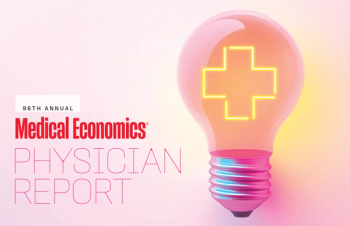
The end of fee-for-service in 5 years?
The stand-alone fee-for-service payment could disappear by the end of the decade if a plan newly released by the National Commission on Physician Payment Reform is followed.
The stand-alone fee-for-service payment could disappear by the end of the decade if a plan newly released by the
Chaired by former Robert Wood Johnson Foundation president Steven A. Schroeder, MD, with former Senator Majority leader Bill Frist, MD, as honorary chairman, the NCPPR is urging a transition over 5 years to a blended payment system that it says will yield better results for both public and private payers, as well as patients.
“We can’t control runaway medical spending without changing how doctors get paid,” Dr. Frist says. “This is a bipartisan issue. We all want to get the most from our healthcare dollars, and that requires re-thinking the way we pay for healthcare.”
“The way we pay doctors is profoundly flawed,” says Dr. Schroeder, who is the Distinguished Professor of Health and Healthcare at the University of California, San Francisco. “We need to move rapidly away from fee-for-service and embrace new ways of paying doctors that encourage cost-effective, high-quality care. The commission’s recommendations put us on that path.”
Initial steps in the commission's recommendations include fast-tracking new models of care, such as
Fee-for-service will remain an important mode of payment into the future, according to the commission's report, which maintains that bundled payments and other fixed payment models are not a panacea; many of these models still pay individual physicians on a fee-for-service basis. As such, the commission put forth several recommendations for recalibrating fee-for-service payment to fix payment inequities and reward care that improves patients’ health.
Among them:
- Increase reimbursement for evaluation and management (E/M) services. Technical services provided by surgeons, radiologists, and other procedural specialists are reimbursed at a much higher rate than E/M services, such as preventive healthcare or an office visit to discuss diabetes management. This approach discourages doctors from spending time with patients, particularly those with complex chronic illness, and has fueled the widening pay gap between specialties that has contributed to the nation’s primary care shortage. For example, in 2011, a radiologist, on average, earned $315,000 a year, whereas a family physician, on average, earned $158,000. Cardiologists, endocrinologists, hematologists, infectious disease specialists, neurologists, psychiatrists, and rheumatologists, as well as primary care physicians, provide a high mixture of E/M services compared with technical services.
- Pay equal rates for the same physician services regardless of specialty or setting. Over the past years, there has been a trend to reimburse medical services performed in outpatient facilities at a lower rate than those same services when provided in hospitals. For example, Medicare pays $450 for an echocardiogram performed in a hospital and only $180 for the same procedure in a physician’s office.
- Abolish Medicare’s sustainable growth rate (SGR). The commission believes that the $138 billion that the Congressional Budget Office estimates it will cost to repeal the SGR can be found entirely by reducing overutilization of medical services within Medicare.
- Improve the AMA/Specialty Society Relative Value Scale Update Committee (RUC). Decision-making needs to be more transparent, and membership must be more representative of the medical profession as a whole, according to the commission. In addition, the report says, the Centers for Medicare and Medicaid Serices should avail itself of alternate sources of advice about pricing physician services.
Follow Medical Economics on
RELATED CONTENT
T
he similarities and differences of ACOs and PCMHs
F
ractured income: Emerging reimbursement models pose new risks
Newsletter
Stay informed and empowered with Medical Economics enewsletter, delivering expert insights, financial strategies, practice management tips and technology trends — tailored for today’s physicians.




